- Published on
Four-part harmony exercise 22
Four-part harmony exercise 22: Accented and unaccented passing notes
Unaccented passing notes (UPN), accented passing notes (APN), auxiliary notes (AUX), suspensions (9-8, 7-6, 4-3) and harmony notes play an important part in generating quaver movement, creating beautiful bass lines, and that all important Bachian dissonance.
Students are familiar with the auxiliary note pairings in 3rds, 6ths and 10ths from exercise 21. They know how to use a 4-3 suspension in a perfect cadence, and a 7-6 suspension in the I - VIIb - Ib patterns found in exercise 16.
You can over do it however. Not every gap needs filling and additional detail can create new consecutive 5ths and 8ves lead to directionless lines.
Unaccented passing notes are useful in creating both rising or falling scalic lines. Accented passing notes only work of course, in descending lines. They are trickier to handle, but worth learning about in order to create stylistic melodic bass lines, and when making harmonic decisions in relation to soprano quaver movement.
Example 1: Unaccented passing notes in the bass line
C minor then Eb major - melody moving 1-2-3-3-2-2-1, 1-2-3-3-2-2-1
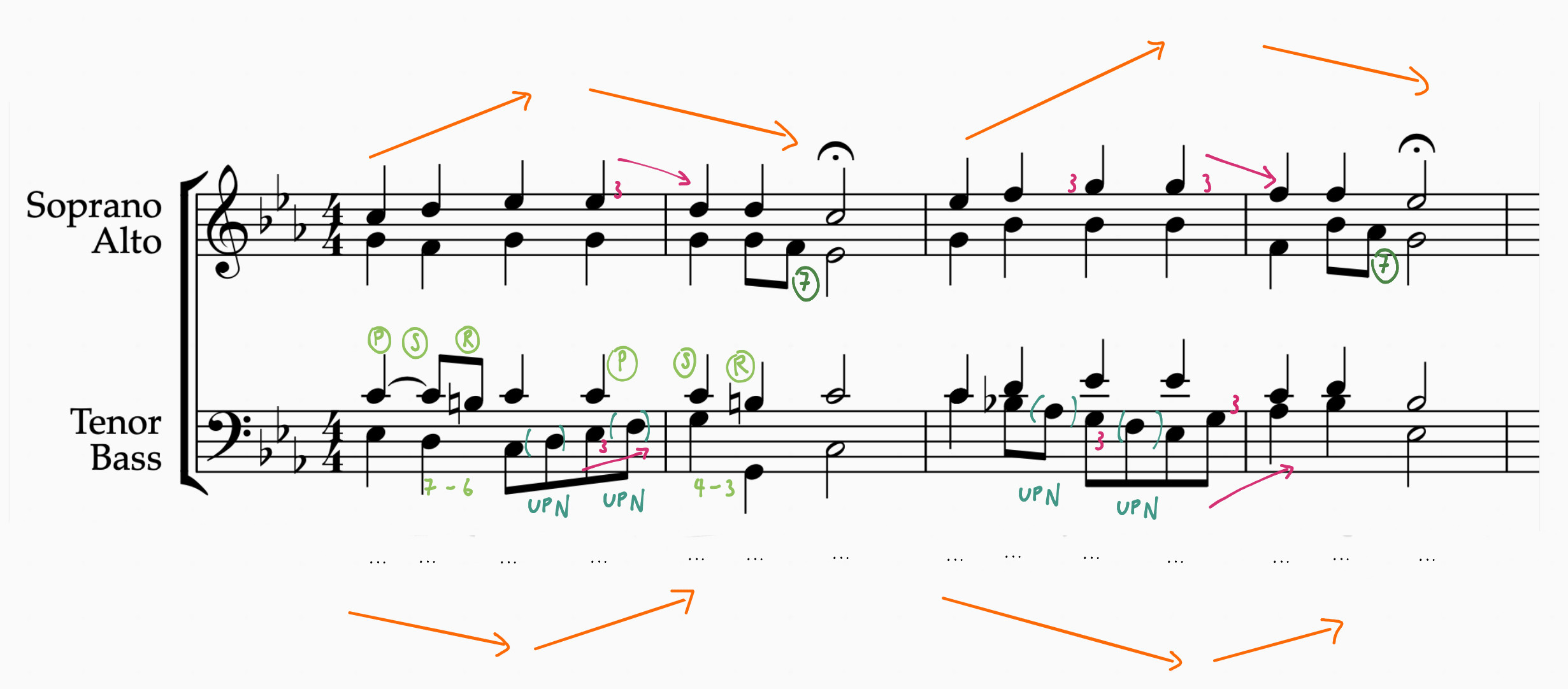
- Play/sing it and analyse the chords together.
- Highlight the step-wise rising line in the bass - the inclusion of the F passing note rising to the G on the downbeat of bar 2 means that this cadence is going to be a long V rather than IIb or II7b - V - I.
- Highlight the 3 note chord bar 2 beat 3 and discuss why the tenor line might need to rise to the C rather than fall to G.
- Highlight the legit doubled 3rd in Ib bar 3 beat 3, and the contrary motion in the outside parts.
This is where students really start engaging with the importance of line and direction, how to make decisions about approach chords, overlapping parts phrase to phrase, and balancing variety and repetition.
Exercise:
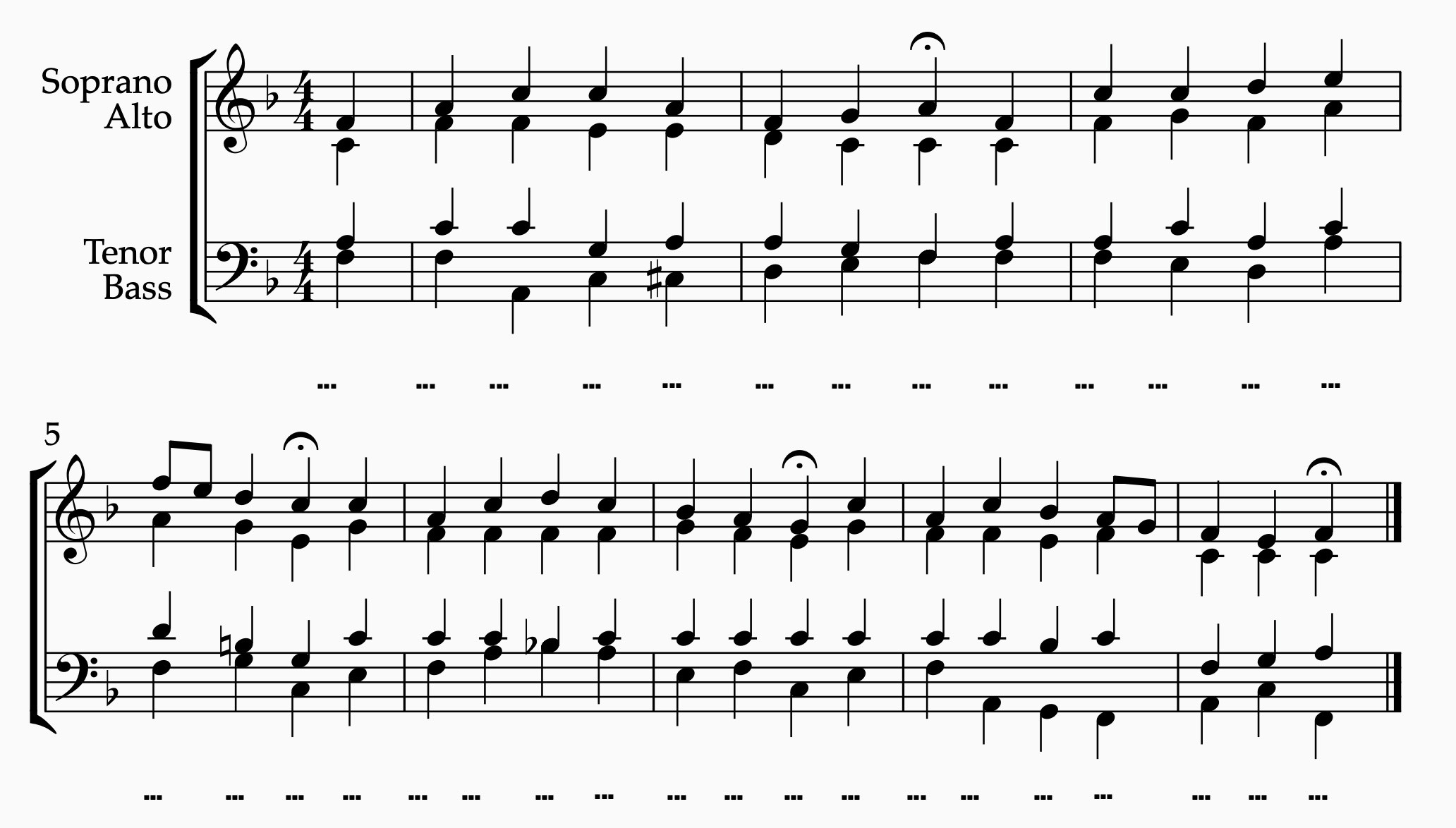
- Analyse the keys, modulations and cadences.
- Add UPNs in alto, tenor or bass wherever they improve the line.
- Revoice and reharmonise where you can improve on what is provided.
- Feel free to drop in tried and tested suspensions.
Style tip: UPNs work singly, in pairs (in 3rds, 6ths,10ths) and in contrary motion passing through the same note.
Health warning: Do not touch the given soprano - EVER.
Here’s a sop only version to print or project:
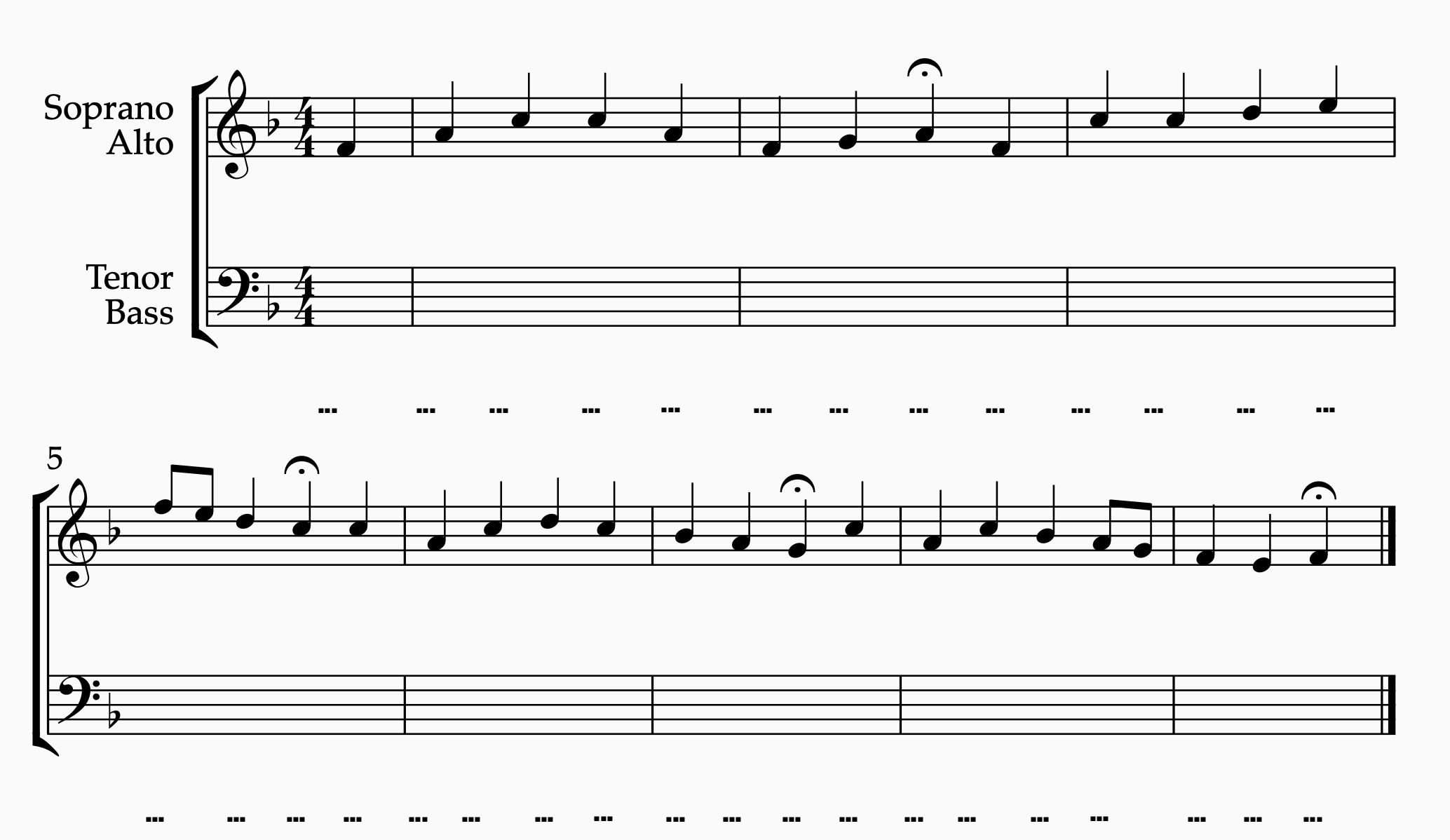
Example 2: Accented passing notes in a descending bass line
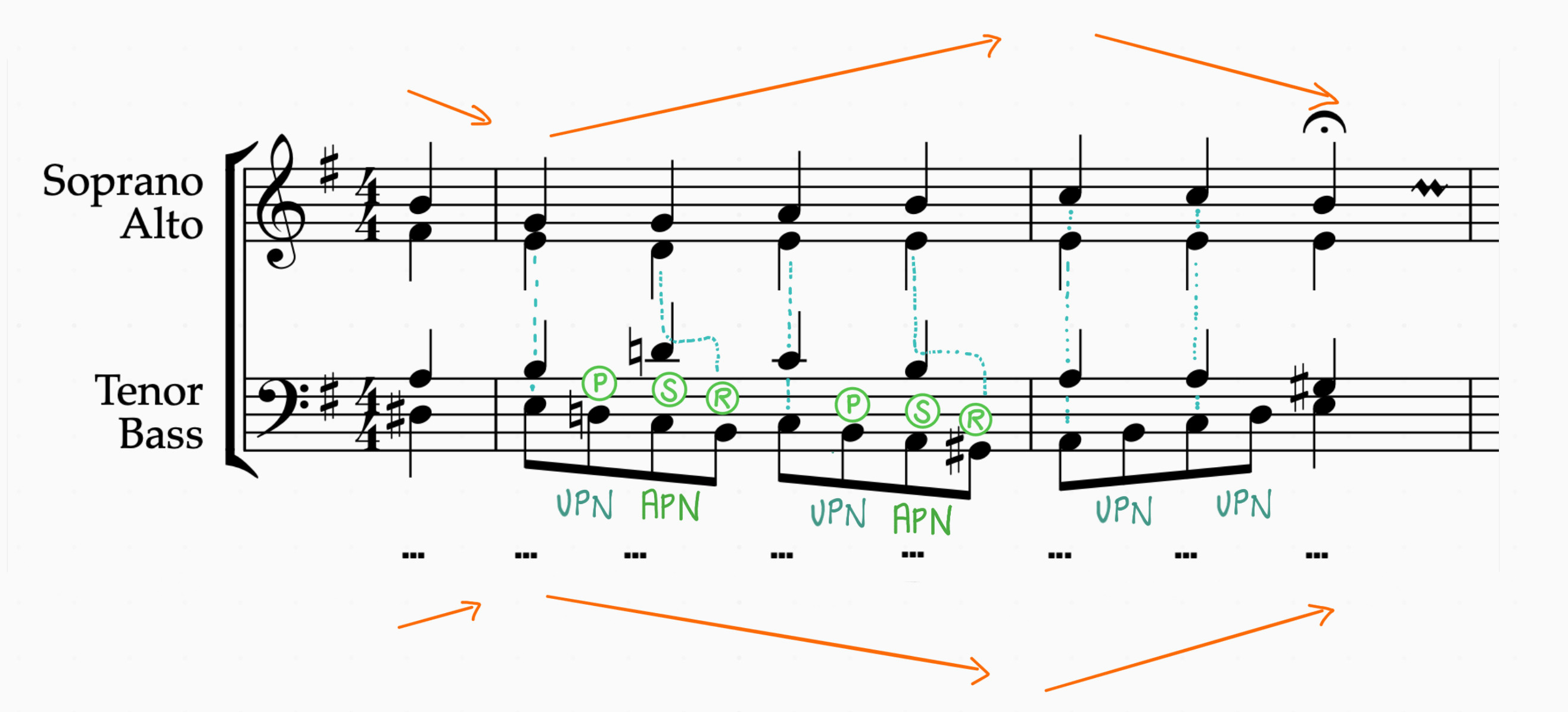
- Play/sing it and analyse the chords together.
- Highlight the PSR of each accented passing note and the sneaky auxiliary note used on beat 2 to keep the quaver movement going.
- Discuss why Bach has gone for D on beat 2 of the first full bar in the tenor, rather than G and then C in the tenor on beat 3, rather than an A.
- Highlight the I - Ib - V run up to the imperfect cadence that we know and love.
Example 3: Treating the onbeats as accented passing notes in a descending soprano line
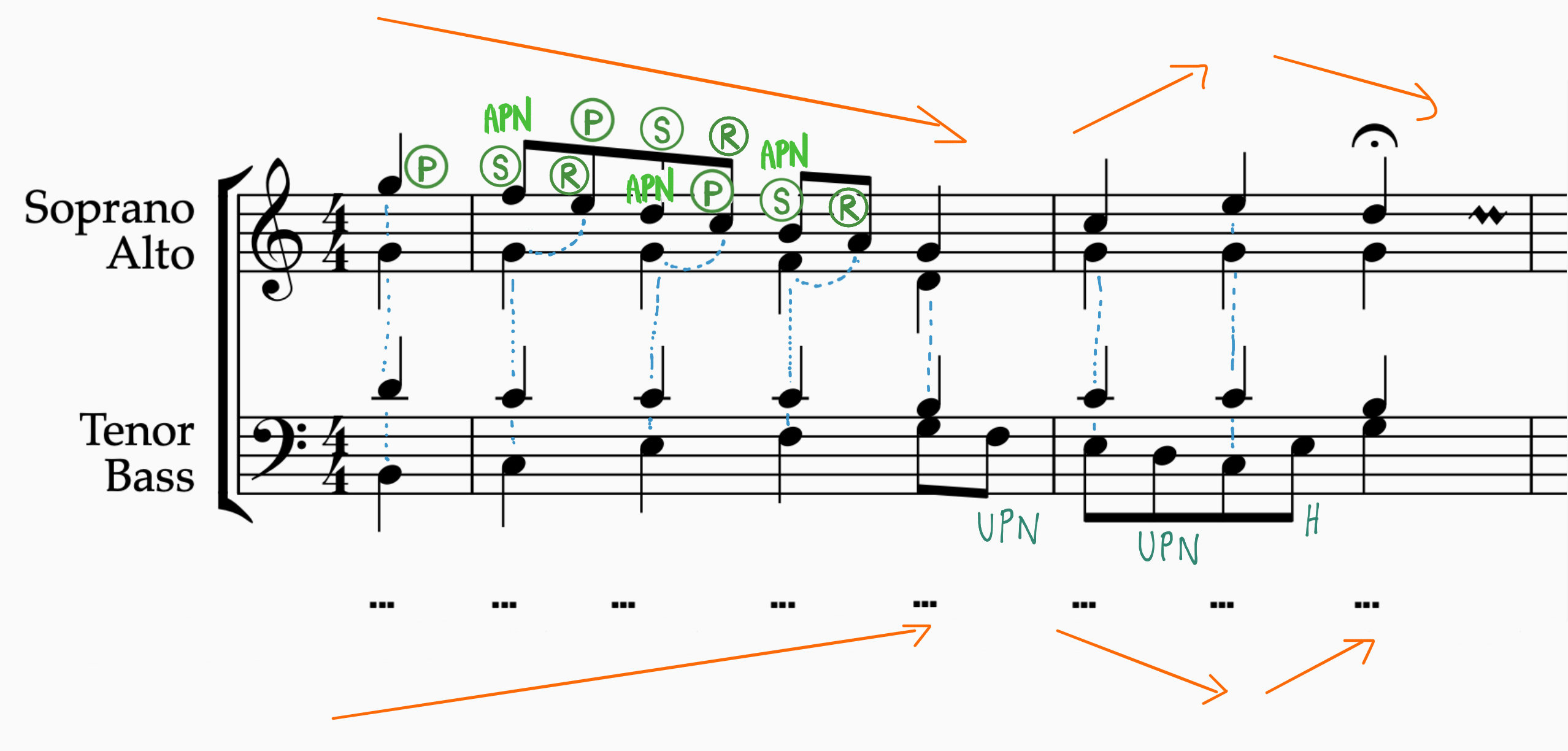
- Play/sing it and analyse the chords together.
- Highlight the PSR of each accented passing note
- Discuss pros and cons of choosing this harmonisation
Example 4: Same melody, different harmonisation with unaccented passing notes
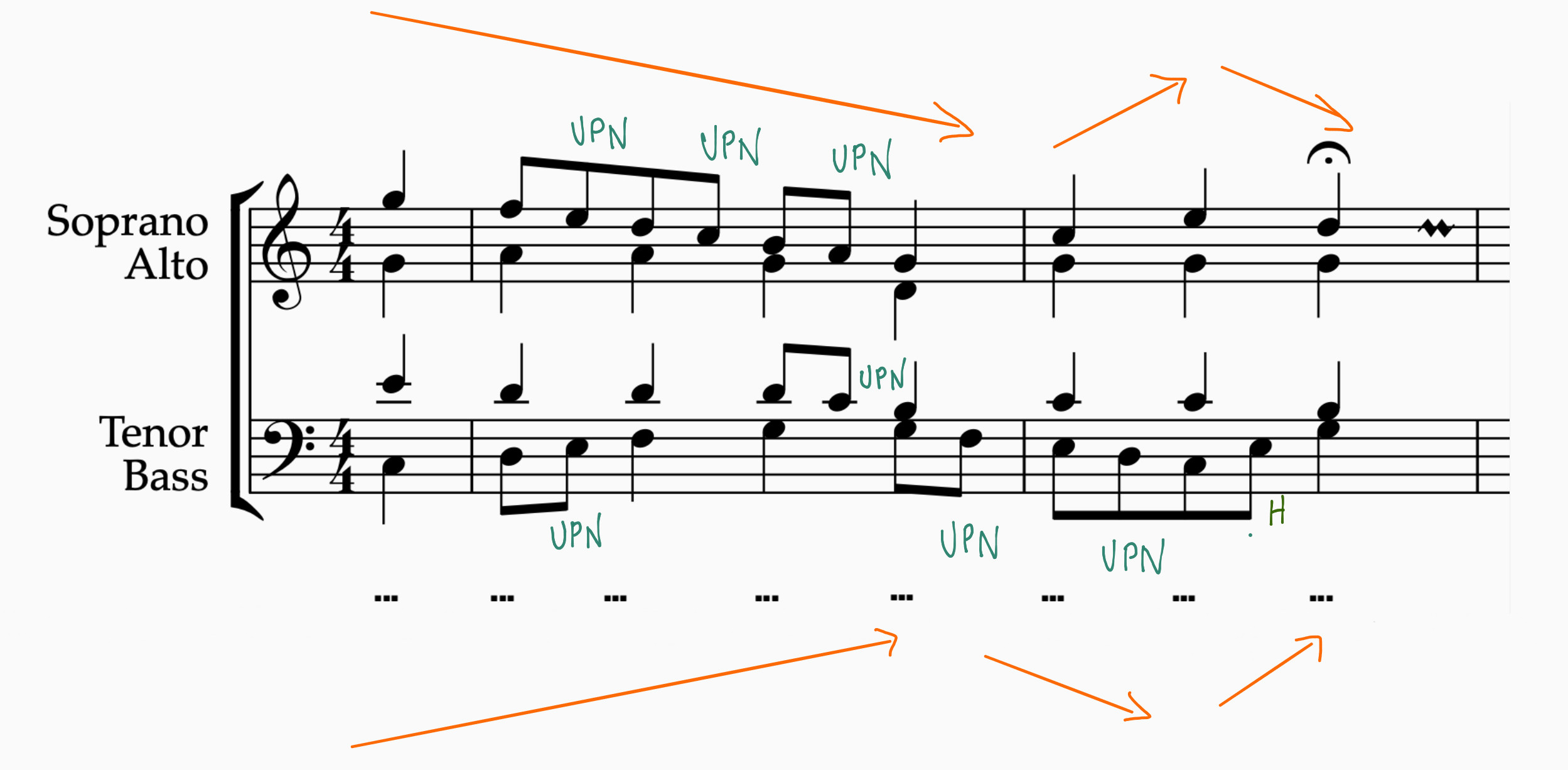
- Play/sing it and analyse the chords together.
- Highlight the UPNs in contrary pairs.
- Discuss the pros and cons of choosing this harmonisation
Using APNs in descending melody lines can create the most glorious dissonance and provide alternative chord choices, but they’re not always easy to spot or work with. I find that most students prefer to restrict their attempts of using APNs to melodic bass line work, using tried and tested stock patterns.
Front cover illustration by Sarah Dao on Unsplash



